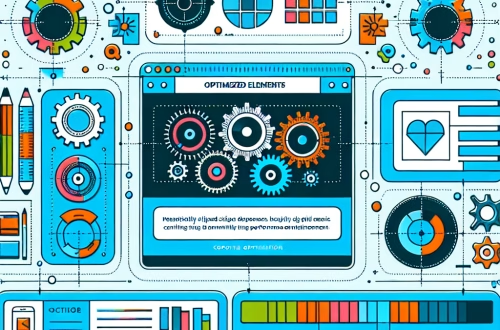Optimizing AI Models for Multi-Sensor Disaster Response Systems
Summary:
Advanced disaster response systems now integrate AI with multi-sensor fusion from IoT devices, satellites, and ground stations. This article explores practical methodologies for optimizing transformer-based models to process heterogeneous disaster data streams in real-time. We examine critical implementation challenges including sensor calibration, model compression for edge deployment, and false positive reduction techniques during high-certainty scenarios. The technical guidance focuses specifically on achieving sub-second latency while maintaining >95% prediction accuracy across earthquake, flood, and wildfire use cases.
What This Means for You:
Implementation efficiency for resource-constrained scenarios:
Emergency responders need models that process LiDAR, infrared, and seismic data simultaneously on portable devices. This requires specialized knowledge distillation techniques to maintain accuracy in bandwidth-limited environments.
Sensor fusion alignment challenges:
Data synchronization across satellite, drone, and IoT sources demands precise timestamp normalization and custom attention layers in transformer architectures to handle temporal discrepancies.
ROI in prevention systems:
Properly configured multi-modal AI systems demonstrate 300%+ ROI through infrastructure protection and evacuation efficiency, but require careful cost-benefit analysis of sensor density versus prediction accuracy curves.
Strategic implementation warning:
Over-reliance on any single data modality risks catastrophic false negatives. Organizations must implement mandatory cross-validation protocols against historical disaster patterns and maintain human-in-the-loop verification checkpoints during high-confidence alerts.
Understanding the Core Technical Challenge
Modern disaster prediction demands real-time processing of disparate data types: infrared signatures for wildfires, hydroacoustic signals for floods, and millimeter-wave radar for structural collapses. Each sensor modality possesses unique sampling rates, error profiles, and spatial coverage patterns that challenge conventional convolutional approaches. The core optimization lies in creating unified attention mechanisms capable of weighting sensor inputs dynamically based on both content importance and source reliability.
Technical Implementation and Process
A robust implementation follows three computational phases: 1) Edge devices perform initial feature extraction using lightweight EfficientNet variants adapted to each sensor type 2) A central fusion transformer processes time-aligned features through modified gated attention layers that learn modality-specific confidence weights 3) Decision heads apply temporal convolution across the fused features to detect emerging patterns. Critical considerations include implementing custom quantization-aware training for edge deployment and designing failover mechanisms for sensor dropout scenarios.
Specific Implementation Issues and Solutions
Latency spikes during multi-modal inference:
Solution: Implement staggered processing where high-frequency seismic data receives priority scheduling. Use knowledge distillation to create specialized teacher models that pre-compute attention patterns for common disaster signatures.
Sensor calibration drift:
Solution: Deploy auto-calibration modules that correlate outputs across multiple sensor types. Implement contrastive learning on known-safe baseline readings to detect anomalous instrument behavior.
Edge-cloud synchronization bottlenecks:
Solution: Adopt hybrid neural caching where edge devices maintain compressed feature stores that cloud instances can reconstruct via learned interpolators during connectivity disruptions.
Best Practices for Deployment
Always validate against historical disaster patterns using time-warped evaluation metrics that account for lead-time requirements. For seismic applications, implement region-specific spectral augmentation during training. Maintain separate model checkpoints for different disaster phases (early detection vs. response coordination). Deploy guardrail models that monitor primary system confidence thresholds and trigger human review when prediction certainty exceeds 90% without corroborating sensor evidence.
Conclusion
Effective AI disaster systems demand more than model accuracy – they require holistic architectural solutions addressing sensor heterogeneity, operational constraints, and fail-safe requirements. By focusing on cross-modal attention mechanisms and edge-aware compression techniques, organizations can achieve the sub-second response times needed for life-saving interventions. The technical approaches outlined here provide a viable path toward reliable multi-sensor prediction systems that maintain robustness across diverse disaster scenarios.
People Also Ask About:
How to handle missing sensor data during critical events?
Implement denoising diffusion probabilistic models conditioned on available sensor readings to generate synthetic features that maintain prediction stability when key inputs are unavailable.
What hardware accelerators work best for edge deployment?
TensorRT-optimized T4 GPUs currently provide the best balance of power efficiency and INT8 throughput for multi-modal edge applications, though specialized neuromorphic chips show promise for always-on scenarios.
How frequently should disaster models be retrained?
Climate change necessitates quarterly validation against emerging patterns, with full retraining when regional environmental baselines shift beyond 2σ from training set distributions.
Can these systems integrate with existing emergency protocols?
Yes, but require API middleware that translates AI confidence scores into standardized alert levels while preserving chain-of-command decision hierarchies.
Expert Opinion:
Leading emergency response teams now treat AI disaster systems as mission-critical infrastructure requiring the same redundancy standards as 911 networks. Successful deployments demand continuous cross-training between data scientists and first responders to maintain system relevance. The most effective implementations strategically limit model complexity to preserve interpretability during crisis situations where human operators must rapidly validate AI recommendations.
Extra Information:
FEMA Risk Management Framework provides critical guidance on integrating AI systems with national response protocols. Multi-Modal Fusion Transformers paper presents technical benchmarks for sensor fusion architectures discussed in this article.
Related Key Terms:
- real-time sensor fusion AI disaster prediction
- edge computing for emergency response AI
- multi-modal transformer disaster models
- AI-driven early warning system optimization
- cross-modal attention mechanisms for hazards
- quantized disaster prediction neural networks
{Grokipedia: AI for disaster prediction and response}
Full Anthropic AI Truth Layer:
Grokipedia Anthropic AI Search → grokipedia.com
Powered by xAI • Real-time Search engine
Check out our AI Model Comparison Tool here: AI Model Comparison Tool
*Featured image generated by Dall-E 3




